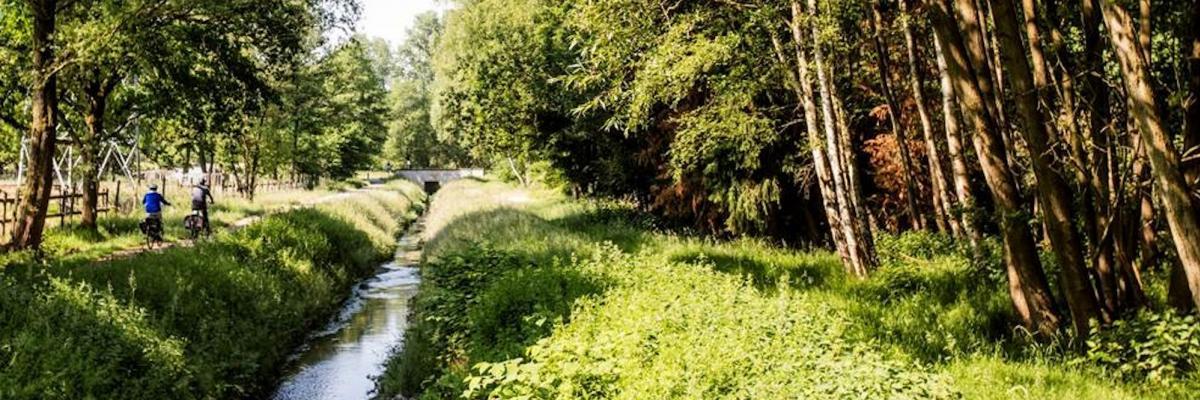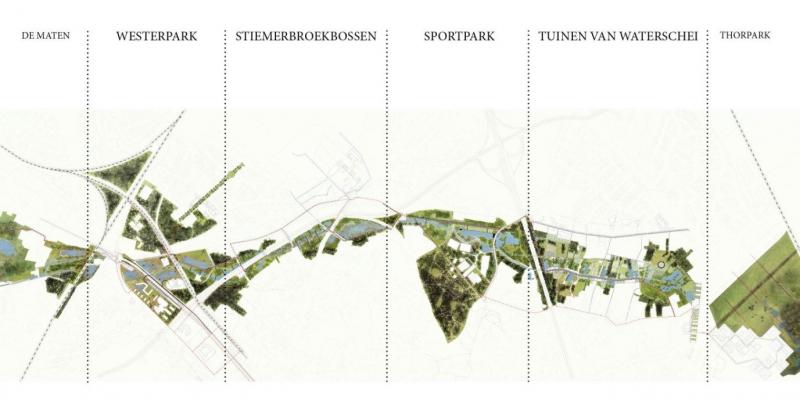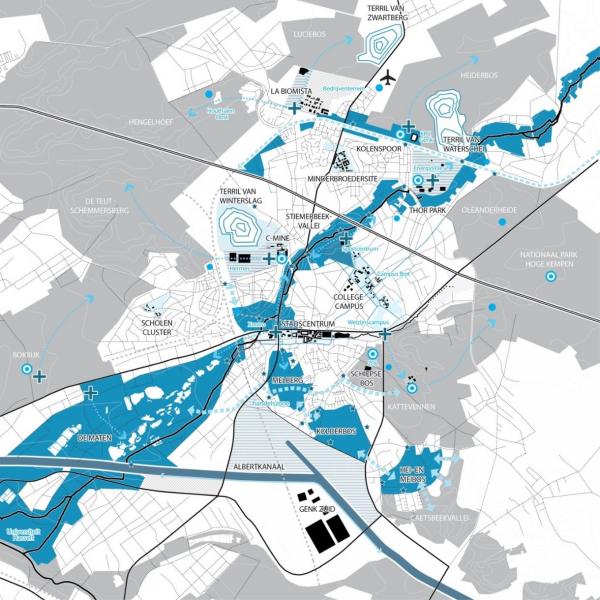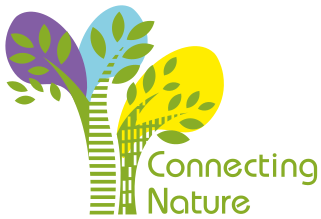
Context
The Stiemer is an overshadowed blue artery that has largely lost contact with its valley. On a regional level it is part of De Wijers’, a unique 700 hectares area with more than 1000 ponds surrounding the cities of Hasselt and Genk. The stream runs about 8 km, right through the urbanized area of Genk. In many places, the Stiemer valley is completely enclosed by buildings and is under pressure from urbanisation. In many places the valley nevertheless still contains ecologically valuable elements and large parts are protected as nature reserve which are maintained by the NGO Natuurpunt. However, the many sewer overflows in the area threaten the ecosystem services and the poor water quality also threatens the lower-lying nature reserve, De Maten, which is part of the Natura 2000 network. This will likely be exacerbated by the impacts of climate change. The Stiemerbeek Valley has an enormous potential to be integral to the climate resilience of Genk and for interweaving green zones with built-up areas to form an attractive whole by means of the multifunctional organization of residual spaces and by forming an urban park in the sustainable Genk of the future.
In the coming years the valley will be developed as a blue-green, urban park connecting strategic city sites, neighbourhoods and nature reserves, whilst contributing to climate resilience. In this urban park there should be synergies between nature and urban developments, room for water and ecology and visitors and inhabitants must be given recreational opportunities to experience a green park environment. Genk city council would like this project to act as an example of the way existing and new green spaces can be integrated into the urban fabric and the way in which green zones can fulfil new, extensive and contemporary functions in or near this urban fabric.
The Stiemer Vallee has been on the city agenda for more than ten years. Since 2010 there is a close cooperation with the Flemish Land Agency (VLM) responsible for managing open space in Flanders. Driven by the European Green4Grey - project (Life+) 2 strategic areas are to be developed: Schansbroek, the source area of the Stiemerbeek (implementation 2016-2018) and the Slagmolen area at the entrance of De Maten (implementation 2018-2022). These catalysing projects incited the need for an integrated vision for the entire valley. Since September 2016 Genk city council has appointed the consortium ‘Tractebel-Descombes-IMDC’ to develop a spatial masterplan for the long-term development of the urban park. Important themes in this development are climate adaptation, biodiversity, wellbeing and social cohesion and sustainable mobility.
 The masterplanning process uses an integrated approach with a strong participatory character. Thematic groups are formed in which different (governmental) stakeholders actively participate in order to formulate a shared vision and define collective projects. Also citizens are involved at different moments. The themes include water- and sewage management, ecology, trajectories and recreation. For each theme, spatial strategies will be defined and visualized, resulting in strategic maps and design principles. These strategies and principles are, embedded in the site-specific characteristics of the valley, integrated into a masterplan for the valley. The masterplan identifies three different spatial conditions within the valley: gardens, nature and edges all connected via a network of trajectories. For each spatial condition, the thematic strategies and design principles are dealt with in a different manner. In doing so, the masterplan does not provide a blueprint for the development of the Stiemerbeek valley, rather it provides a strategic toolbox for a gradual spatial transformation.
The masterplanning process uses an integrated approach with a strong participatory character. Thematic groups are formed in which different (governmental) stakeholders actively participate in order to formulate a shared vision and define collective projects. Also citizens are involved at different moments. The themes include water- and sewage management, ecology, trajectories and recreation. For each theme, spatial strategies will be defined and visualized, resulting in strategic maps and design principles. These strategies and principles are, embedded in the site-specific characteristics of the valley, integrated into a masterplan for the valley. The masterplan identifies three different spatial conditions within the valley: gardens, nature and edges all connected via a network of trajectories. For each spatial condition, the thematic strategies and design principles are dealt with in a different manner. In doing so, the masterplan does not provide a blueprint for the development of the Stiemerbeek valley, rather it provides a strategic toolbox for a gradual spatial transformation.
Climate change/adaption and sustainable use of resources
The place where the Stiemer exemplar will be implemented has low water quality and environmental quality is degraded. Specifically, the water quality of the area is poor due to the many sewer overflows. The natural stream is affected by wastewater due to the urbanisation along its flow. In certain areas of the Stiemer valley there are flooding problems during periods with heavy rainfall. The urbanisation in the valley causes a rapid discharge of rainwater combined with poor recharge of the groundwater table resulting in the drying out of the valley and in biodiversity losses. Futureproofing the water system is seen as crucial in the development of the exemplar and is an enormous challenge as it will require action in the broader catchment area. Where all neighbours over the years literally turned their back to the Stiemer, Genk has the ambition to reverse this trend by a nature-based solution that will create a natural water system, improve water flows and quality and give more space to water in the valley and the entire catchment area.
Health, wellbeing, and placemaking
The Stiemer Valley nature-based solution exemplar contains a green city line for walking and biking, promoting the use of sustainable transport between the different neighbourhoods (with their variation in ethnical and cultural diversities) and strategic city sites; not only for citizens but also for commuters and tourists; integrating movement in the daily routine of the people. It will connect neighbourhoods, nature reserves and strategic city locations like the sport park being an eco-social connector. The Stiemer exemplar will generate more recreational opportunities in the valley further demonstrating the positive effects of green spaces on stress reduction, spending slow and quality time in contact with nature. Given that Genk is a former mining city, with a large non-indigenous community legacy, the Stiemer exemplar (urban multifunctional park) is envisioned to be an exemplar of how communities can adapt and collaborate across different cultural barriers and to employ cultural diversity as an innovation asset for place-making interventions. This has relevance to the current pressures that Europe is facing from large-scale migration and how it can turn the current narrative of ‘fear’ to a narrative of ‘hope’ in innovating European cities.
Social cohesion and community engagement (co-creation)
Genk is a highly diverse city with 55% of the population of foreign ethnic origin due to migration for the mining industry. Genk houses a high degree of poorly educated communities and has a high youth unemployment rate (27%). The Stiemer exemplar will be a connection between five neighbourhoods contributing to social flows and accessibility across these neighbourhoods.
Economic development
Genk has faced multiple economic crises. In the second half of the twentieth century, the coalmines closed and in 2012 the Ford production factory (biggest employer in the wide region) closed down. Faced with these challenges, the city of Genk initiated a transition strategy by reconverting its 3 former mining cites to centres of new economies. The mine of Winterslag was reconverted in a hub for the creative economy (C-mine), the mine of Waterschei in a hub for sustainable energy and technology (Thor-park), and the mine of Zwartberg to a hub for diversity and cosmopolitanism (La Biomista). At these sites, facilities for education, business incubation, events/ meetings and recreation are available. As such, an innovation ecosystem is present in Genk, with facilities and support at different levels.
How city of Genk is adding value through the Connecting Nature programme
Being part of the Connecting Nature programme is enabling Genk to realise a much broader and more strategic suite of goals than originally conceived. Starting the CN programme with a spatial masterplan, the city team have now broadened their approach to include social innovation, entrepreneurship and co-creational approaches to governance that could help unlock much broader support within the city administration and with external partners to achieve multifunctional benefits. They have recruited a social innovator and are in the process of strengthening the team through adding entrepreneurial business expertise. Both of these appointments will assist links across departmental silos within the city administration, which has been identified as a barrier, and thereby enhance the co-creational working to achieve multifunctional benefits within the programme.
The team have also identified different physical interventions and an innovative collaborative governance model that will help deliver the Stiemer Programme. Crucially, the city is in the process of producing its next set of strategic priorities, with the opportunity to embed the Stiemer as a core project to address climate resilience.
